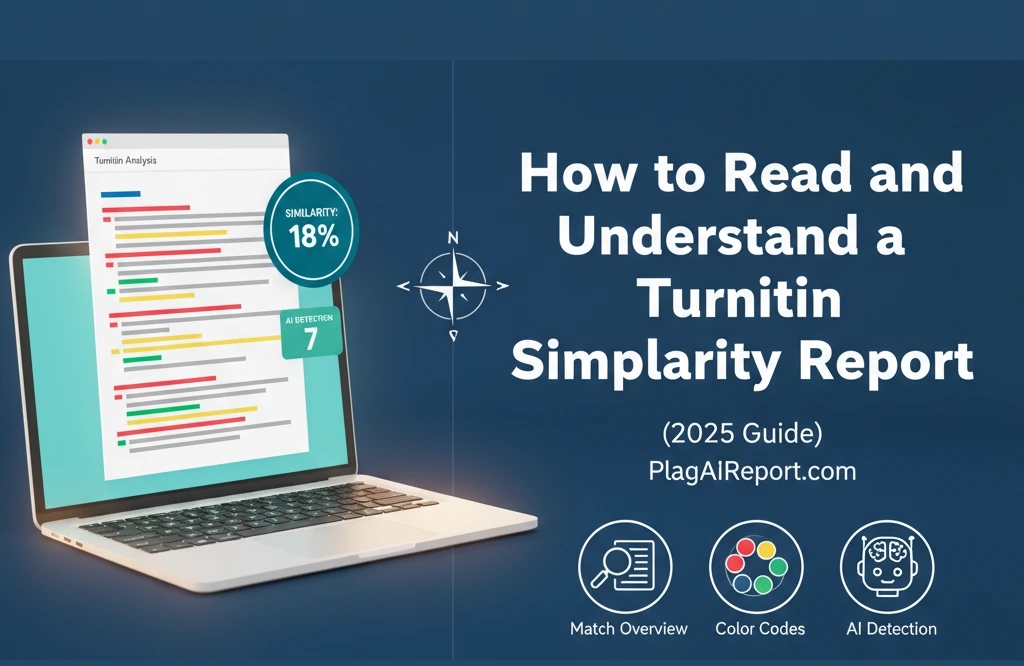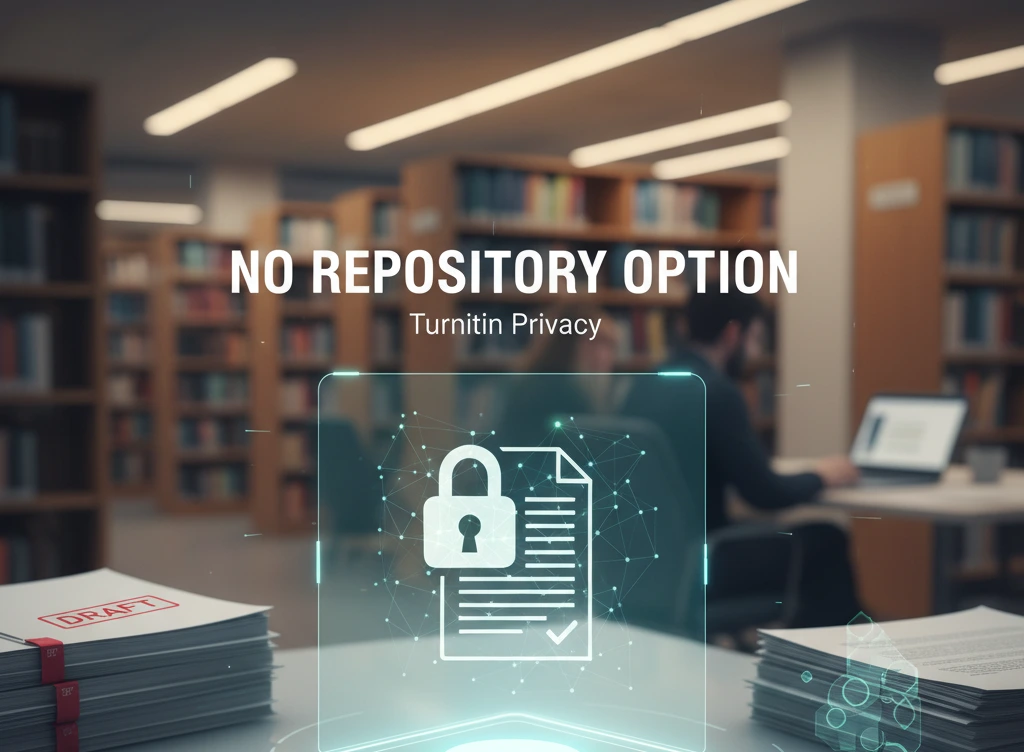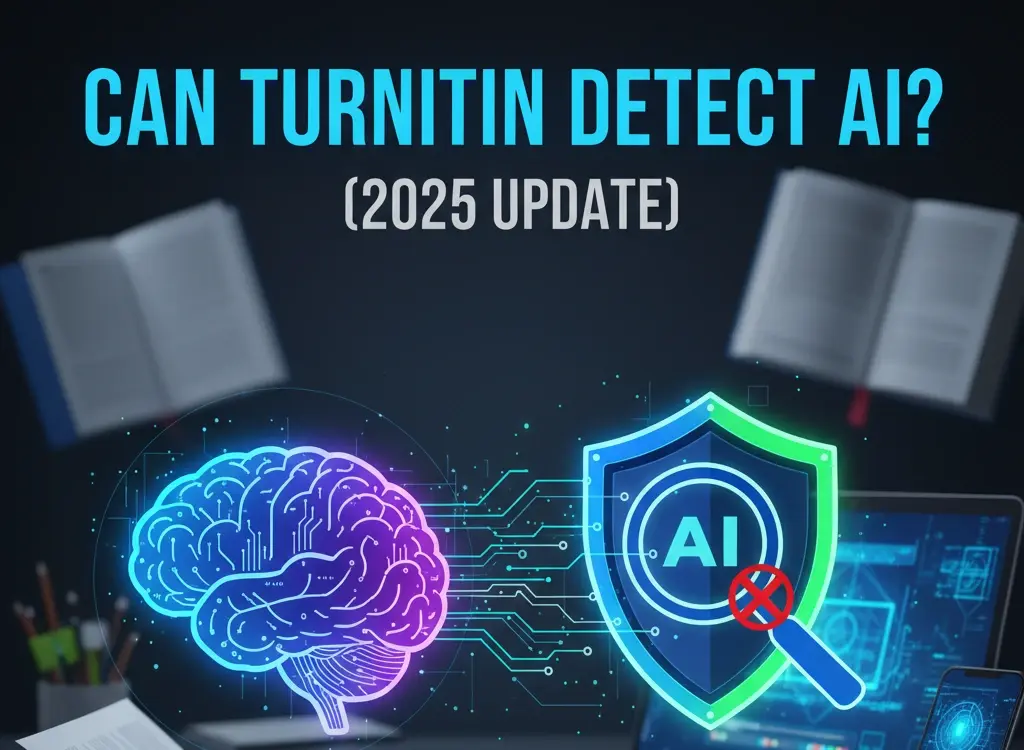Turnitin is the undisputed heavyweight champion of academic integrity. Trusted by thousands of universities, colleges, and schools across the globe, it is the primary tool instructors use to verify the originality of student submissions, from short essays to complex doctoral theses.
The moment you click “submit” on an assignment, a wave of anxiety often follows. Beyond the fear of simple uncited sources, a more technical question lingers for many: Can Turnitin detect plagiarism from old papers and archival repositories?
The short answer is a definitive YES.
Turnitin is designed specifically to compare your submission not just against the live internet, but also against a massive, continuously growing database of previously submitted student papers, archived journals, and historical documents, some dating back decades. This is the core function of the Turnitin repository.
For students, researchers, and professional freelancers, this capability raises a critical concern: How can you check the originality of your work with the same trusted system without your document being permanently stored in that vast repository?
This is where understanding no repository Turnitin scanning becomes essential. In this comprehensive guide, we’ll dive deep into how Turnitin’s powerful global database works and confirm how it catches content from old papers.
How Turnitin’s Plagiarism Database Works
To understand how Turnitin catches an old paper, you must first grasp the sheer scale and structure of its detection system. Turnitin doesn’t just scan the open web; it relies on a sophisticated, multi-layered digital archive often called the Turnitin plagiarism database.
This database is comprised of three primary repositories that your submitted paper is compared against during every originality check:
1. The Student Paper Repository
This is arguably the most crucial component for students. Whenever a paper is submitted to Turnitin through an institutional account (a university or school), it is, by default, stored in this vast, private global archive.
- What it is: A secure database containing billions of papers submitted by students from institutions worldwide that subscribe to Turnitin.
- The implication: If a student tries to reuse an old essay, copy a paper from a friend who took the same course years ago, or purchase a pre-written assignment that has been submitted previously, Turnitin will find a match. Does Turnitin save papers permanently? Yes, in this repository, they are stored indefinitely unless a specific setting is applied.
2. Internet Sources Database
This is the repository that most people understand. It includes a massive snapshot of the public internet.
- What it is: Billions of current and archived web pages, including free online essay banks, Wikipedia, blogs, news articles, academic research sites, and even old, captured versions of websites.
- The implication: Turnitin’s web crawler continuously collects and indexes content. This means even if a source is taken down from the live web, there is a strong chance that Turnitin has an archived copy that will be used to generate the Turnitin similarity report.
3. Publication Repository
This database holds professionally published, peer-reviewed, and copyrighted works.
- What it is: Millions of articles from academic journals, eBooks, major reference works, and subscription-based research publications. Turnitin partners with publishers to gain access to content that is often behind a paywall.
- The implication: This ensures that students cannot plagiarize from high-level, paid academic sources that are not freely accessible on the public internet.
When a paper is submitted through a standard institutional account, the submission settings are typically configured to ensure the file is stored permanently in the Student Paper Repository for future comparison unless you request a permanent deletion of a paper stored in the repository.
Can Turnitin Detect Plagiarism from Old Papers? Confirmed.
Based on the structure of the Student Paper Repository, the answer is unequivocally yes. Turnitin’s detection mechanism is specifically designed to compare your new submission against all stored papers in its global repository, including submissions from years, even decades, ago.
This functionality serves a vital purpose: to prevent contract cheating and paper recycling.
The Problem of Paper Recycling
If a student attempts to reuse a paper they wrote for a previous course or, more commonly, obtains an essay from a third-party source that has been submitted before, the system will flag it.
Imagine a scenario:
- 2018: A student at “University A” submits a paper on the Industrial Revolution. It is stored in the Turnitin repository.
- 2025: A student at “College B” in a different country submits a paper on the exact same topic, using significant sections of the 2018 paper.
Turnitin compares the 2025 paper against the stored 2018 paper, and a near-perfect match is immediately highlighted in the Turnitin similarity report. This is the power and the intended functionality of how Turnitin detects plagiarism.
Even minor attempts to fool the system—like changing a few words or rearranging sentences—are often unsuccessful. Turnitin’s algorithms are advanced enough to recognize semantic similarity and text structure, ensuring that even subtly reworded, recycled content will generate a high similarity score.
Understanding “No Repository” Mode
For many users – including students doing final checks, independent researchers, or professional writers, the idea of permanently storing their unique, original work in a global database is a significant concern. This is where the no repository Turnitin mode becomes invaluable.
What is No Repository Scanning?
When a paper is scanned in “no repository” mode:
- Scanning Occurs: Turnitin still runs the document against all three databases (Student Paper, Internet, and Publications) to generate the official Turnitin similarity report. This ensures the originality check is complete and accurate.
- Storage is Prevented: Crucially, the document is not saved in the Student Paper Repository. The file is analyzed but immediately discarded from the system after the report is generated.
This ensures the document remains private and cannot be matched against future submissions. It is the gold standard for confidentiality.
Your file is analyzed using Turnitin’s official system but not stored; so even if your instructor checks it later, your paper will still appear as completely original.
This is a non-negotiable feature for anyone who needs to verify their work’s originality but must protect their intellectual property.
What PlagAiReport.com Offers
Understanding the necessity of a no-repository check is one thing; accessing it affordably and reliably is another. Most individuals cannot purchase a direct Turnitin license, and using a university account carries the inherent risk of having your paper permanently saved.
PlagAiReport.com was created to bridge this exact gap, offering students, researchers, and freelancers a secure, verified, and private way to get the official reports they need.
Core Features of PlagAiReport.com:
- Genuine Turnitin Reports: We provide the official PDF or verified screenshot of your Turnitin similarity report. This is the exact same report your professor or client would see.
- No Repository Uploads: This is our most critical guarantee. Every document is scanned using no repository Turnitin settings, ensuring your work is checked against the full database but is not stored in the Turnitin repository for future comparison. Your file remains private.
- Affordable Options: We believe in making academic integrity accessible:
- $2 – Turnitin Similarity Report (Only)
- $2 – AI Detection Report (Only)
- $3 – Both Reports (Similarity + AI Detection)
- Pay After Delivery: We operate on a foundation of full transparency and trust. You receive a verified report and only pay once you have confirmed the results.
- Simple Sharing: Skip the complicated login process. Share your document (Word or PDF) via Email, WhatsApp, Telegram, or Signal—whichever app you prefer.
- Speed and Efficiency: You’ll get your reports delivered directly to your inbox within 5–10 minutes, allowing you to quickly make revisions and submit with confidence.
Why This Matters for Students and Freelancers
The need for a safe, no-repository check extends beyond simple peace of mind.
Protecting Your Intellectual Property (IP)
For students writing a unique thesis, dissertation, or capstone project, the last thing they want is for their original research to become permanently archived in a global system, potentially being flagged as a match against future submissions. Using the no repository Turnitin mode provided by PlagAiReport.com safeguards your IP.
Avoiding False Positives for Freelancers
Freelance writers and independent academics often reuse foundational research or personal notes across different client projects. While the final written piece is original, if a prior version was scanned and saved by another client’s institutional account, it could cause a false-positive match later. Using a private service that does not store the paper eliminates this professional risk.
Bridging the Access Gap
Many independent learners and writers who don’t have a university login still need official Turnitin verification to prove their work is original to potential employers or clients. PlagAiReport.com bridges that gap safely, giving access to the industry-standard check without the risk of an institutional upload.
Ethical Use and Research Responsibility
While understanding how to get a no repository Turnitin check is important, it’s essential to remember the purpose of the Turnitin similarity report: it is a learning and improvement tool, not a system to be gamed.
We encourage all users to treat the report as a final quality check to ensure they have properly cited all sources and ethically paraphrased ideas.
Actionable Advice:
- Always cite every source, even for ideas that seem general knowledge.
- Familiarize yourself with the differences between plagiarism, paraphrasing, and direct quotes.
- After receiving your report from PlagAiReport.com, use the findings to improve your writing and citation skills.
For more detailed guidance, read our article: “How to Reduce Plagiarism in Your Paper Without Changing Meaning.”
Frequently Asked Questions (FAQs)
Does Turnitin save my paper permanently?
When a paper is submitted through a typical university or institutional account, the default setting is often to save the paper permanently in the Turnitin repository. This is what allows Turnitin to detect plagiarism from papers submitted years ago. However, we use the no repository Turnitin setting, ensuring your file is scanned but not stored.
Can Turnitin detect papers submitted years ago?
Yes, absolutely. The entire purpose of the Student Paper Repository is to store submissions for future comparison. Turnitin compares your submission against this global database, which includes papers dating back to the system’s inception.
What is Turnitin’s “no repository” option?
The “no repository” option is a specific setting in the Turnitin system that allows a paper to be scanned and checked against the full database, but prevents it from being added to the Student Paper Repository. This means the paper is not stored and cannot be matched against future submissions, ensuring the privacy and security of the author’s work.
Is PlagAiReport.com’s report the same as a university Turnitin report?
Yes, the reports provided by PlagAiReport.com are generated using the official Turnitin system. They are the genuine Turnitin similarity report and AI detection reports. The key difference is that we use the essential “no repository” setting to protect your work from being stored.
How can I ensure my work isn’t stored in Turnitin’s system?
The only way to guarantee your work isn’t stored is to use the no repository Turnitin setting.






